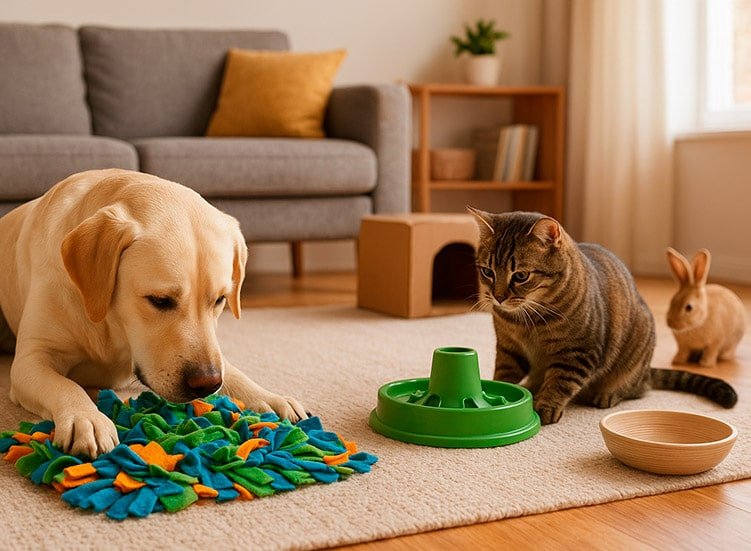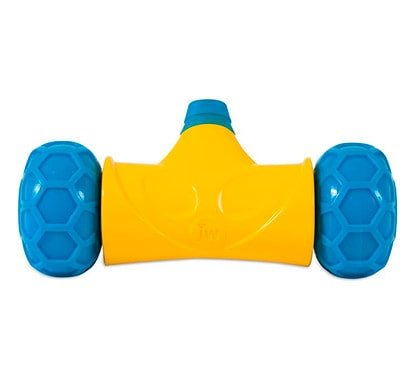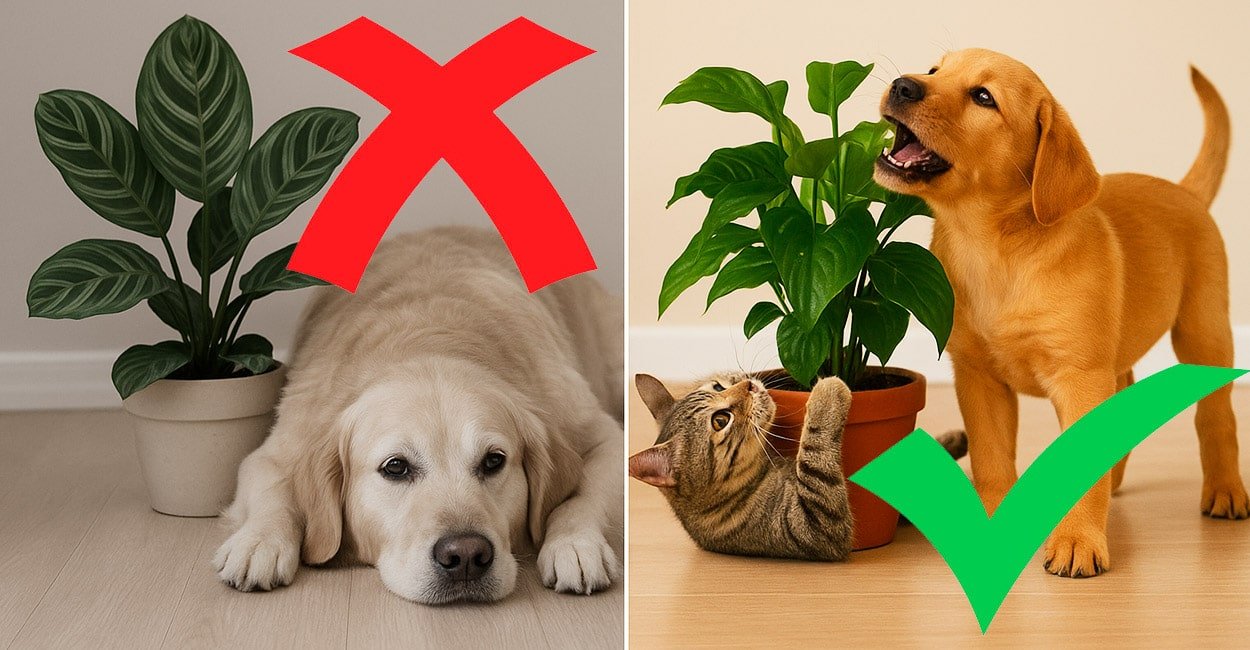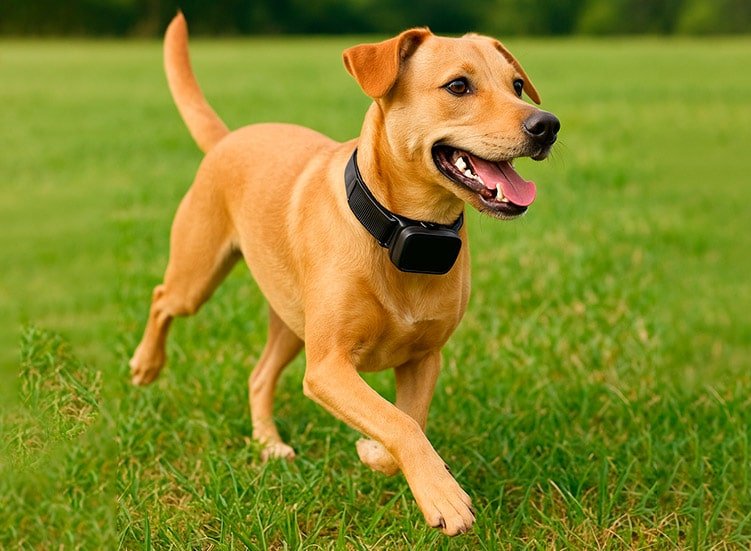Learn to recognize the signs of boredom in your pet (dogs, cats, and others), with practical solutions, a checklist, and recommended Amazon products to provide more Mental Stimulation for Pets.
This article is useful for owners of dogs, cats, rabbits, birds, and small mammals, but with a primary focus on dogs. Here, you will read about:
- How to identify 10 common signs of boredom in pets and how to act.
- Practical benefit: reducing destructive behaviors, anxiety, and improving the animal’s quality of life.
10 signs your furry friend is bored and needs more mental stimulation for pets
Each sign below comes with an explanation, typical behavior by species, and what to do immediately.
1. Destructive behavior (chewing, digging, scratching)
What it is: Chewing shoes, tearing up cushions, digging in planters, or scratching furniture with no clear cause.
Why it happens: Pets, especially dogs and rabbits, use physical + mental activity to expend energy. Without it, they channel frustration into objects.
Examples by Species:
- Dogs: Chewing furniture or shoes when left alone for many hours (Often related to separation anxiety, but rooted in boredom).
- Cats: Scratching furniture due to a lack of interesting toys or scratching posts.
- Rabbits and Rodents: Chewing on cables and furniture due to boredom and lack of safe enrichment activities.
Quick Fix: Offer sturdy chew toys, hide treats in interactive puzzle toys, and increase supervised playtime. (Consider high-quality brands available on Amazon US/Chewy/Petco).
2. Excessive attention seeking and vocalizations
Some pets meow, bark, or make repetitive noises until they get a human response. This often indicates they need mental activity or companionship.
What to look for: An increase in vocalizations shortly after you leave or always at the same time can signal boredom — not just separation distress.
Quick Fix: Short routine games before you leave, treat-dispensing toys, and calming playlists designed for pets (like those found on Spotify or YouTube).
3. Eating too fast or constantly begging for food
Eating without enjoyment, gulping food quickly, or constantly begging can be behavior motivated by boredom, not just hunger.
Species: Dogs and cats that are voracious eaters, rodents that “hoard” kibble due to lack of stimulation.
Practical Solution: Use puzzle feeders, slow feeders, and feed in small portions with pauses for treat-seeking games.
4. Overweight or loss of physical fitness
A lack of exercise with a mental component often leads to weight gain. Pets that don’t face mental challenges also move less.
Practical Solution: Introduce varied search games (scent work/sniffing games), more dynamic walks, and toys that encourage movement and problem-solving.
5. Reduced interest in old toys
When the “usual” toy no longer works, it’s because the pet has solved the mental puzzle it offered — it’s time to rotate.
Solution: Rotate toys weekly and introduce puzzle toys with varying difficulty levels.
6. Ritualistic and repetitive behaviors
Repeated movements without purpose (walking in circles, constantly licking fixed spots) can indicate mental frustration (sometimes Pica or OCD-like behaviors).
Practical Solution: Introduce scent puzzles (snuffle mats), foraging activities, and treat-dispensing toys to redirect this behavior.
7. Aggressiveness or impatience with other pets or people
Boredom can reduce the animal’s tolerance for social stimuli, leading to snapping, fighting, or “grumbling.”
Solution: Short training sessions with positive reinforcement, controlled socialization, and focus-demanding activities (which improves self-control).
8. Excessive grooming (licking, cleaning) or hair loss
Some cats and dogs over-lick due to frustration; rodents may also over-groom. It’s not always dermatological — pay attention to the behavioral context.
Solution: Increase Mental Stimulation for Pets and redirect with olfactory toys; if it persists, see a vet (to rule out medical causes).
9. Lack of curiosity and apathy
Pets that previously explored the house but have lost interest in new things may be bored. This is different from medical sadness, but needs observation.
Solution: Introduce enrichment routines, hide treats, and practice controlled “hunting” indoors.
10. Nighttime stimulation-seeking behaviors
Pets that disturb the family’s sleep at night (running, meowing, digging) may be seeking stimulation they didn’t receive during the day.
Practical Solution: Short mental activity sessions before bedtime — 10–15 minutes of a puzzle, followed by a calm-down routine (massage, dark, quiet environment).
Quick Summary: signs like destruction, vocalizations, altered appetite, and apathy are the most common. The key is to differentiate boredom from medical issues — when in doubt, consult your veterinarian.
How to set up a mental stimulation plan for pets — step-by-step (practical)
A plan for the next 4 weeks, with daily actions and weekly goals to start seeing changes.
Week 1 — Assessment and small changes
- Observe and note: when do problematic behaviors occur (time, context).
- Rotate toys: hide 2 toys and leave 2 new ones visible (rotate every 3 days).
- Introduce 5–10 minutes of a mental game 2x a day (simple puzzle, hiding treats).
Week 2 — Increase complexity
- Use slow feeders and puzzle feeders for meals (1 to 2 meals per day).
- Include a 10-minute training session (basic commands + positive reinforcement).
- Try a snuffle mat or a beginner treat-dispensing toy.
Week 3 — Socialization and variety
- Plan a more active walk (for dogs): include different smells (scent work) and search games.
- For cats: wand games, hiding toys in cardboard boxes, or vertical climbing time.
- For small mammals: rotate items in the enclosure for exploration.
Week 4 — Consolidated routine
- Establish 3 fixed moments of Mental Stimulation for Pets per day (morning, afternoon, night).
- Monitor behavior and aim to reduce incidents by 50% (a realistic goal for many families).
- Adjust activities according to your pet’s personality.
Daily checklist (printable)
- ☐ 2 sessions of 10 minutes of mental stimulation.
- ☐ 1 meal with a foraging element (puzzle/slow feeder).
- ☐ 1 session of socialization/training or an active walk.
- ☐ Toy rotation every 3 days.
- ☐ Cuddle/Grooming time for relaxation.
Practical Tip: Consistency for 10–20 minutes per day has a greater effect than long, sporadic activities. The goal is to work on concentration, curiosity, and problem-solving skills.
Recommended products for mental stimulation for pets, options to get started
Selected products that aid in mental stimulation for different pets. (Links should be directed to major US/UK retailers like Amazon US/UK or Chewy).
| Product | Type | Indication |
|---|---|---|
| Catit Senses / Puzzle Feeder (example of an interactive feeder) | Cat Puzzle Feeder | Cats that eat quickly and need a challenge during mealtimes. |
| Outward Hound Fun Feeder Slo Bowl | Slow Feeder Bowl (anti-gulping) | Dogs that eat too quickly — reduces speed and encourages chewing. |
| Snuffle Mat (Olfactory Foraging) | Snuffle Mat for Dogs and Cats | Stimulates the sense of smell and “hunting” for treats, ideal for reducing boredom. |
| Programmable Automatic Feeder (e.g., PetSafe, SureFeed) | Automatic Dispenser | Good for routines and distributing small portions throughout the day. |
| Treat Dispenser Camera / Treat Cam (e.g., Furbo) | Camera with Interactive Dispenser | Allows remote interaction and treat delivery — excellent for owners who are away. |
| Electronic Treat Dispensing Toy (e.g., IQ Treat Ball) | Electronic Dispenser / Toy | Automates play and rewards with treats, useful for short days. |
Curiosities and interesting facts about mental stimulation for pets
- Pets use their sense of smell to occupy 80–90% of their exploration time in certain situations — this is why snuffle mats work so well.
- Cats have crepuscular activity peaks (early morning and late afternoon) — stimulation programs during these times are more efficient.
- Toys that release variable treats (unpredictable rewards) are more motivating than those that always release the same amount.
❓ (FAQ) Frequently Asked questions about mental stimulation for pets
Observe the context: boredom worsens with long periods alone and improves with activity. If there is persistent loss of appetite, lethargy, or physical symptoms, consult a veterinarian.
Treat-dispensing puzzle toys, snuffle mats, and sturdy chew toys are great for adult dogs. Combine these with training commands for extra mental stimulation.
Use puzzle feeders, wand toys (to simulate hunting), and boxes with hidden nooks. Snuffle mats for cats work well when stuffed with small, dry treats.
Rotate them every 3–7 days. The idea is to maintain novelty — you don’t always need to buy new ones; hiding and reintroducing old favorites works very well.
Not completely. Automatic toys are complementary: they help when you are absent, but human interaction and training sessions are essential for bonding and socialization.
Conclusion on mental stimulation for pets
Boredom is a common cause of undesirable behaviors in pets — and the good news is that it has a practical solution. With 10–20 daily minutes of well-planned mental activities, you will see significant improvements in your animal’s behavior and well-being.
Did you like the content? Share it with someone who has a pet that needs stimulation and try one of the suggested products to start today!
Products mentioned in the article on mental stimulation for pets
- Catit Puzzle Feeder / Interactive feeder for cats. View product!
- Outward Hound Fun Feeder Slo Bowl (anti-gulping bowl for dogs). View product!
- Snuffle Mat (olfactory foraging for dogs and cats). View product!
- Programmable Automatic Feeder (automatic dispenser). View product!
- Pet camera with treat dispenser (treat cam). View product!
- Electronic treat dispenser / automated toy (e.g., RoboBone). View product!
Final notes and good practices on mental stimulation for pets
- If you suspect a medical problem, prioritize consulting your veterinarian before attributing everything to boredom.
- Combine mental stimulation with physical activity; both complement each other.
- Monitor progress for 2–4 weeks and adjust the routine according to your pet’s personality.
Share this article with someone who loves their pet and would love to know this information on how to take better care of them!
And if you want to know more about how to care for and protect your pet, we suggest reading our other article on: GPS Dog Tracker, Complete guide to choosing the best model
Click here for more content on the Pet universe.






